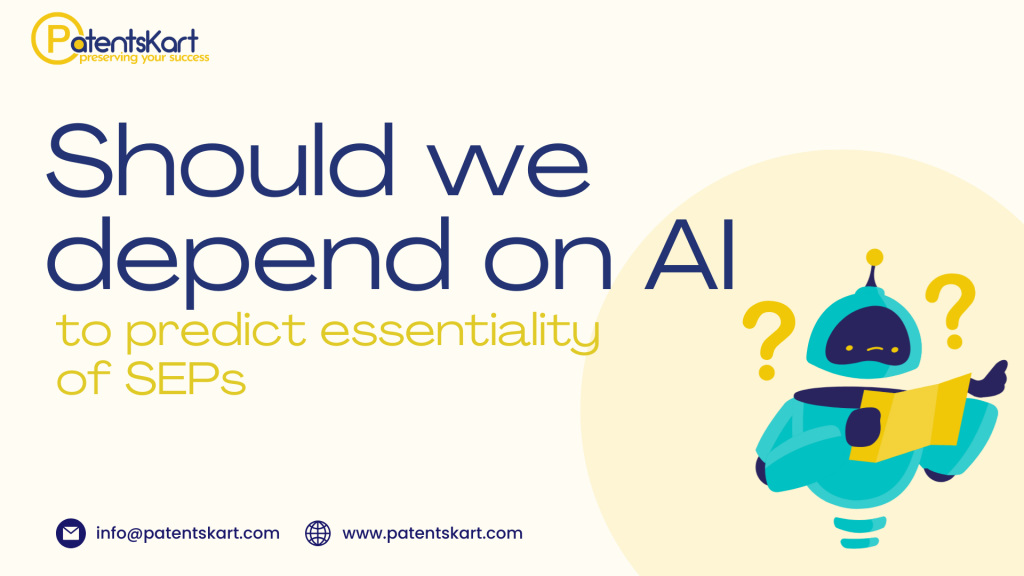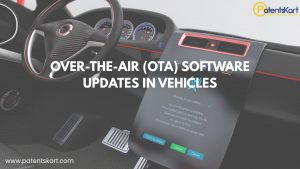In an ecosystem governed by standards, correctly identifying which patents are genuinely essential is a strategic necessity. This article explains why SEP essentiality prediction matters, where raw declaration data fails, and how disciplined intelligence converts patent ambiguity into negotiation leverage, product strategy, and measurable commercial outcomes.
Introduction-framing the problem
Standards create the technical rules that allow devices and networks to interoperate. The patents that read on those standards are functionally critical, and a subset of these constitute a high-value class of property. Precise SEP essentiality prediction is how companies move from guesswork to decision-grade insight, preventing costly mistakes and unlocking new commercial options.
When declarations are treated as definitive proof instead of starting points for evaluation, organizations expose themselves to risk. A defensible approach requires rigor that is repeatable, auditable, and aligned to commercial priorities.
The anatomy of essentiality
To determine if a claim is essential, analysts must map claim language to specific normative clauses. This is not a binary exercise; it is probabilistic, fact-driven, and requires both linguistic and technical competence. Reliable SEP essentiality prediction combines automated matching with human adjudication to produce defensible results for licensing and litigation.
Claim scope, prosecution history, claim amendments, and the standard’s normative text all play roles. Without rigorous claim-level linkage, any higher-level conclusion about essentiality is speculative.
Why raw declaration data is dangerous
Standards organizations publish declarations in disparate formats. Many entries are blanket claims or lack patent identifiers. OCR errors, family linkage issues, and inconsistent assignee names distort the picture. Dependence on unvalidated declarations undermines negotiations and misguides product architecture decisions that interact with essential claims. In short, ignoring rigorous SEP essentiality prediction exposes organizations to financial and strategic risk.
Decisions based on unverified data create four immediate problems: inflated licensing budgets, weakened negotiating positions, strategic surprises in procurement, and mispriced M&A transactions. The only remedy is validated intelligence.
From data to signals: what to measure
World-class analytics extract a small set of signals: claim-clause linkage strength, forward citation influence, claim breadth, remaining life, and portfolio overlap matrices. These signals are the backbone of practical SEP essentiality prediction that informs licensing strategy, procurement decisions, and standards engagement.
Such signals must be presented with provenance and confidence intervals. Boards and general counsel require traceability: which clause was mapped, what reviewer adjudications were applied, and what updates have occurred since the original declaration.
Use cases where better intelligence changes outcomes
Licensing negotiators use validated essentiality to anchor offers in demonstrable influence rather than headline claim counts. Product teams redesign protocol behavior to avoid costly dependencies once they understand precise exposure. M&A teams adjust valuations when claim-level evidence revises the expected royalty tail. Procurement leaders renegotiate supplier agreements when analytics reveal indirect reliance on third-party essential assets.
When SEP essentiality prediction is embedded in these workflows, savings and strategic clarity follow quickly.
Designing a defensible essentiality program
A robust program ingests SSO declarations and patent office records, normalizes metadata, aligns claims to normative text, scores strength using transparent models, and routes edge cases to expert review. Every conclusion must carry provenance. When embedded in governance, SEP essentiality prediction outputs are auditable, repeatable, and legally defensible — essential for enterprise-scale adoption.
Model weights and thresholds should be documented and versioned. Human review should be an explicit, recorded step, not an afterthought. That combination produces both scale and defensibility.
Operationalizing intelligence: analytics to action
The intelligence stack should translate claim-level analysis into operational outputs: a prioritized list of high-impact assets, exposure heat-maps, scenario-based royalty modeling, and negotiation playbooks. These outputs extend the value of SEP essentiality prediction beyond theory and into procurement, R&D trade-offs, and board-level risk dashboards.
Integration with PLM, procurement systems, and licensing trackers ensures these outputs influence decisions as they are made, not after the fact.
Measuring value: KPIs that matter
Revenue at risk, avoided royalty costs, negotiation cycle time, litigation frequency, and time-to-decision are actionable KPIs tied to accurate SEP essentiality prediction. Organizations that measure these outcomes with a validated dataset demonstrate clear ROI for their investment in SEP analytics platforms.
Regular executive reporting should combine these metrics with narrative case studies that explain decisions driven by the intelligence.
Human + machine: the hybrid model
Purely automated approaches can scale but often fail in contested or novel cases. A hybrid model that combines machine-assisted matching with expert adjudication produces defensible SEP essentiality prediction at enterprise scale. Machines find patterns; humans interpret nuance.
The correct engineering trade-off is a system that uses algorithms to prioritize, not to finalize, and that attaches reviewer evidence to every conclusion.
Case studies: realistic composites
One OEM discovered, through a claim-to-clause audit, that a limited set of families created disproportionate licensing exposure. A targeted redesign eliminated significant royalty risk. Another vendor used validated essentiality to rebut an inflated demand, shortening the dispute timeline and reducing settlement costs. These examples show how SEP essentiality prediction becomes businessable intelligence.
In both cases, the financial impact was immediate and measurable—demonstrating that intelligence pays for itself.
Governance and ethics
Because standard-essential outcomes touch critical infrastructure, the methodology for SEP essentiality prediction must be transparent, versioned, and auditable. Independent review pathways and bias mitigation in training data are not optional — they are prerequisites for trust when public policy and national interests are involved.
Publish a high-level methodology appendix and provide a mechanism for third-party review on high-stakes engagements. These steps protect reputation and increase adoption.
Why product packaging matters
Commercial offerings should bundle executive summaries, negotiator evidence packs, and integration modules. A free scoped pilot—delivering a prioritized heatmap and remediation plan—often yields rapid conversion. For enterprise clients, API access with role-based controls and webhook-driven alerts is essential.
Different buyer personas require different output formats: executive one-pagers for the board; claim-level evidence packages for counsel; and integration-ready feeds for engineering and procurement systems.
Technical architecture considerations
A resilient platform requires a data lake for SSO inputs, normalized family stores, a claim-to-clause matching engine, a scoring layer with transparent weights, and a human review interface. Continuous monitoring reconciles new declarations and legal events to keep exposure models current. Enterprise APIs enable real-time integration with business systems.
Security, access control, and audit logs must be designed into the platform from day one for both confidentiality and legal defensibility.
Visualization: clarity through design
Complex analyses become actionable when presented clearly. Use layered visualizations: a global map displaying concentration by legal entity and jurisdiction, an interactive timeline showing filing intensity and score evolution, a network graph that reveals claim citation density, and an overlap matrix for quick identification of blocking positions. Each visualization should be downloadable with an evidence package for legal and commercial review.
Interactive filters that allow slicing by jurisdiction, expiration window, and claim confidence level convert complex data into precise action.
People and governance
Assign a named owner for the intelligence program and convene a cross-functional governance board with legal, technical, and commercial representation. Maintain a public change log for methodology updates so stakeholders can trace decisions to specific model versions and reviewer conclusions.
This level of governance is the difference between research and enterprise-grade service.
KPIs and business measurement
Track adoption metrics (percentage of negotiations using intelligence), financial outcomes (royalties avoided), and operational improvements (reduction in negotiation cycle time). Tie these metrics to executive compensation where appropriate to secure long-term investment.
Regularly publish internal case studies that demonstrate how SEP intelligence reduced cost or accelerated time-to-market.
Legal defensibility and audit readiness
For any claim used in a negotiation or presented in litigation support, ensure the dataset includes a provenance trail: original declaration, normalized patent identifiers, claim text, standard clause mapping, reviewer notes, and timestamps for every change. Exportable audit logs in machine-readable formats enable rapid discovery and defense.
Legal teams will favor vendors that provide reproducible evidence, not just conclusions.
Commercial packaging and go-to-market considerations
Productize offerings into tiers: an executive insight pack for C-suite decision makers, a negotiator’s toolkit with evidence packages for licensing teams, and an integration suite for enterprises requiring API access. Offer a scoped pilot engagement that delivers a prioritized heatmap and a remediation plan, which often converts to enterprise subscriptions.
Consider outcome-based pricing in specific engagements where value can be quantified.
Technical roadmap for integrations
Expose intelligence through RESTful APIs and provide SDKs for common enterprise languages. Support query parameters for score thresholds, jurisdiction filters, assignee lists, and time windows. Provide webhook support for event-driven notifications when scores change materially.
Role-based access and multi-tenant support are essential for large organizations
Security and compliance considerations
Treat patent data with enterprise-grade security: encryption at rest, strict access controls, audit logs for exports, and options for private deployments in regulated industries.
Support for on-premise installations may be necessary for highly sensitive engagements.
FAQ for customers
How often are datasets refreshed?
Best practice aligns refresh cadence with SSO publication cycles, augmented by continuous monitoring of declarations and legal events.
How can I validate a score?
Each score should link to claim text, mapped standard clauses, and reviewer notes.
How can I validate a score?
Each score should link to claim text, mapped standard clauses, and reviewer notes.
Can thresholds be customized?
Yes — thresholds should be configurable to fit negotiation or litigation risk profiles.
Promotion and SEO operational plan
Repurpose the analysis into a one-page executive summary for gated capture, a short analyst brief for LinkedIn promotion, and a technical appendix for legal teams. Ensure canonical tags, structured data, and links from relevant solution pages. Include a concise TL;DR at the top to aid AI overview systems and answer boxes.
Amplify with targeted outreach to licensing networks and standards working groups.
Why insideSEP by PatentsKart Leads in Essentiality Intelligence
Trusting AI alone to determine essentiality invites risk. That’s why PatentsKart developed insideSEP, a platform that blends advanced automation with expert verification to deliver defensible results.
InsideSEP provides:
• Claim-to-clause mapping with transparent evidence
• Machine learning models trained specifically for telecom standards
• Expert review on edge cases for legal defensibility
• Decision dashboards for licensing, procurement, and R&D strategy
• Continuous refresh with standards and legal updates
Organizations use insideSEP to:
• Replace uncertainty with validated exposure intelligence
• Strengthen licensing positions with clear evidence
• Align product roadmaps to minimize royalty impact
• Support M&A diligence with reliable asset insights
It’s intelligence that wins negotiations — not guesswork.
Conclusion and next steps
An enterprise should approach this capability as a program. Start with a focused pilot, demonstrate measurable outcomes, and scale governance. The combination of data engineering, explainable modeling, and expert review will convert patent ambiguity into commercial certainty — enabling smarter negotiations, more resilient product roadmaps, and stronger market influence.
Effective leadership in standards-driven markets requires investment in SEP essentiality prediction.
Visit www.patentskart.com or contact us at info@patentskart.com.







